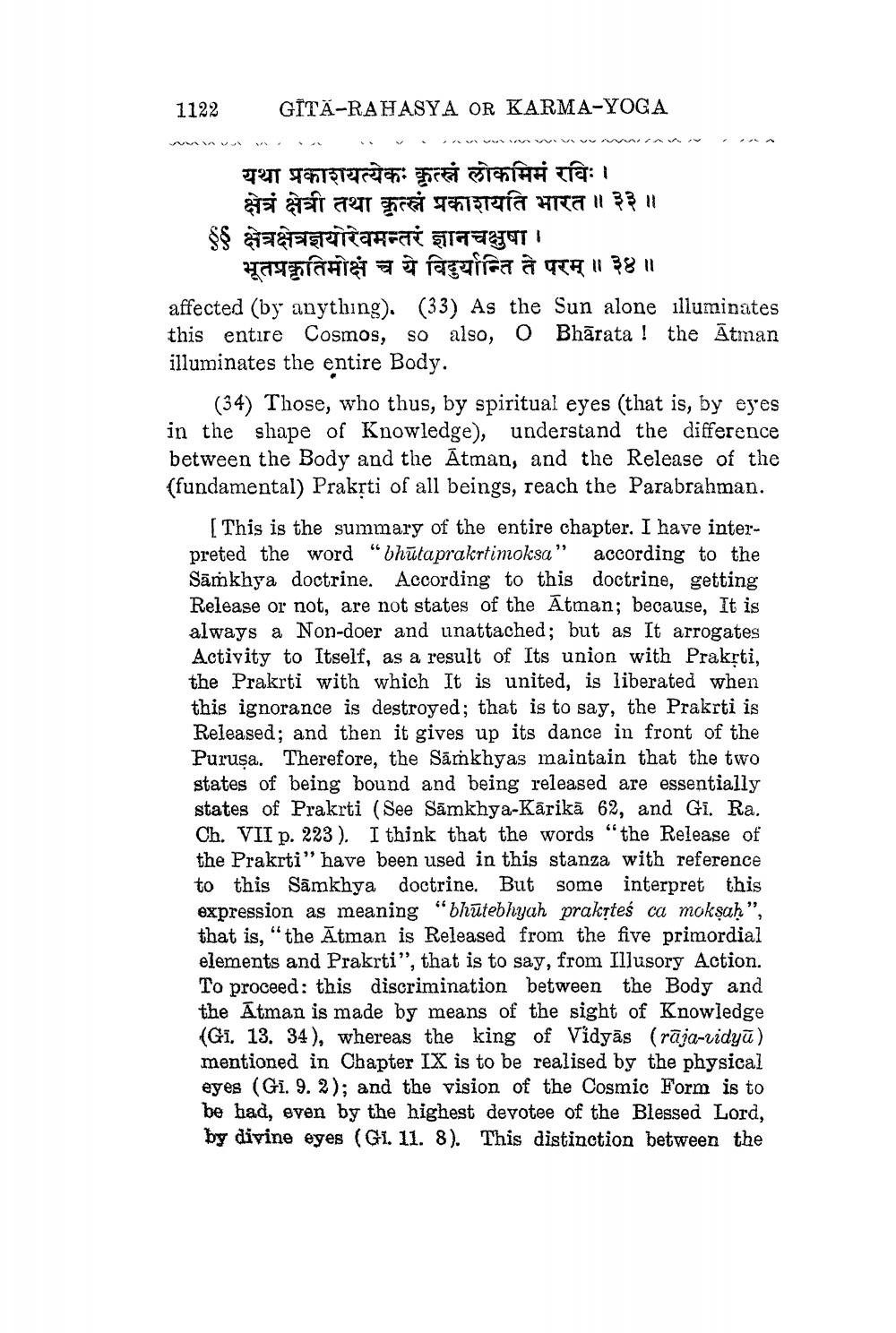________________
1122
GITÄ-RAHASYA OR KARMA-YOGA
यथा प्रकाशयत्येक कृत्स्नं लोकमिमं रविः ।
क्षेत्रं क्षेत्री तथा कृत्स्नं प्रकाशयति भारत ॥ ३३ ॥ ६ क्षेत्रक्षेत्रज्ञयोरेवमन्तरं ज्ञानचक्षुषा ।
भूतप्रकृतिमोक्षं च ये विदुर्यान्ति ते परम् ॥ ३४॥ affected (by anything). (33) As the Sun alone illuminates this entire Cosmos, so also, O Bhārata ! the Ātman illuminates the entire Body.
(34) Those, who thus, by spiritual eyes (that is, by eyes in the shape of Knowledge), understand the difference between the Body and the Ātman, and the Release of the (fundamental) Praksti of all beings, reach the Parabrahman.
[This is the summary of the entire chapter. I have interpreted the word "bhūtaprakrtimoksa" according to the Sāmkhya doctrine. According to this doctrine, getting Release or not, are not states of the Atman; because, It is always a Non-doer and unattached; but as It arrogates Activity to Itself, as a result of Its union with Prakrti, the Prakrti with which It is united, is liberated when this ignorance is destroyed; that is to say, the Prakrti is Released; and then it gives up its dance in front of the Puruşa. Therefore, the Sāṁkhyas maintain that the two states of being bound and being released are essentially states of Prakrti (See Sāmkhya-Karikā 62, and Gi. Ra. Ch. VII p. 223). I think that the words "the Release of the Prakrti" have been used in this stanza with reference to this Sâmkhya doctrine. But some interpret this expression as meaning "bhūtebhyah prakȚteś ca mokşah", that is, "the Ātman is Released from the five primordial elements and Prakrti”, that is to say, from Illusory Action. To proceed: this discrimination between the Body and the Atman is made by means of the sight of Knowledge (Gi. 13. 34), whereas the king of Vidyās (rāja-vidyā) mentioned in Chapter IX is to be realised by the physical eyes (Gi. 9. 2); and the vision of the Cosmic Form is to be had, even by the highest devotee of the Blessed Lord, by divine eyes (G1. 11. 8). This distinction between the




